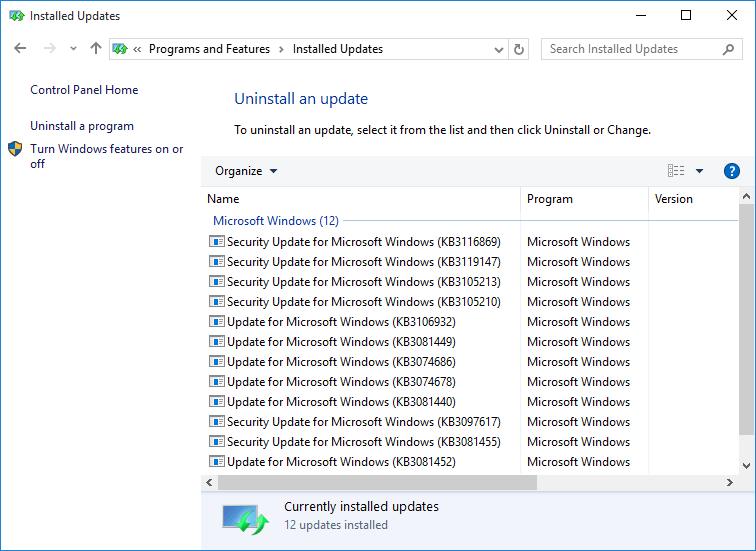On rare occasions, a Windows Update may have adverse effects on your system. In times like these, you may decide to remove the update in order to have the system run without it. To do this, follow these steps:
- Display the Control Panel.
- Click the Programs category.
- Under the Programs and Features heading, click View Installed Updates. Windows displays the Installed Update screen. (See Figure 1.)

Figure 1. Windows Update history screen.
- Select the update you want to remove by clicking on it once. The screen changes slightly, displaying an Uninstall link just to the right of the Organize drop-down list.
- Click the Uninstall link. Windows asks you if you really want to uninstall the update.
- Click Yes. The update is uninstalled.
When you're finished uninstalling updates, close the Control Panel window. You may also need to restart your system to finish an uninstall.
Author Bio
Barry Dysert
Barry has been a computer professional for over 35 years, working in different positions such as technical team leader, project manager, and software developer. He is currently a software engineer with an emphasis on developing custom applications under Microsoft Windows. When not working with Windows or writing Tips, Barry is an amateur writer. His first non-fiction book is titled "A Chronological Commentary of Revelation." Learn more about Barry...
Using Folder Templates
Windows is highly customizable. One way you can customize it is by changing what the File Explorer looks like. This can ...
Discover More
Reviewing the Windows Update History
Windows installs updates automatically by default. If you want to review what updates have been installed, seeing the ...
Discover More
Pin Items to the Taskbar
You can improve your efficiency at managing your applications through effective use of the taskbar. This tip shows you ...
Discover More
Enabling Safe Mode
Safe Mode is an essential way to regain control of a system that fails to fully boot. Windows 10 doesn't come with a way ...
Discover More
Changing How the Power Button Behaves
When you shut down your system, you normally use the Power button that is visible after you click the Start button. You ...
Discover More
Disabling Automatic Reboot after a Windows Update
It may not always be a good thing to have Windows automatically restart your computer after an update. This tip tells you ...
Discover More

![]()
![]()
![]() This tip (5647) applies to Windows 7, 8, and 10.
This tip (5647) applies to Windows 7, 8, and 10.
Comments